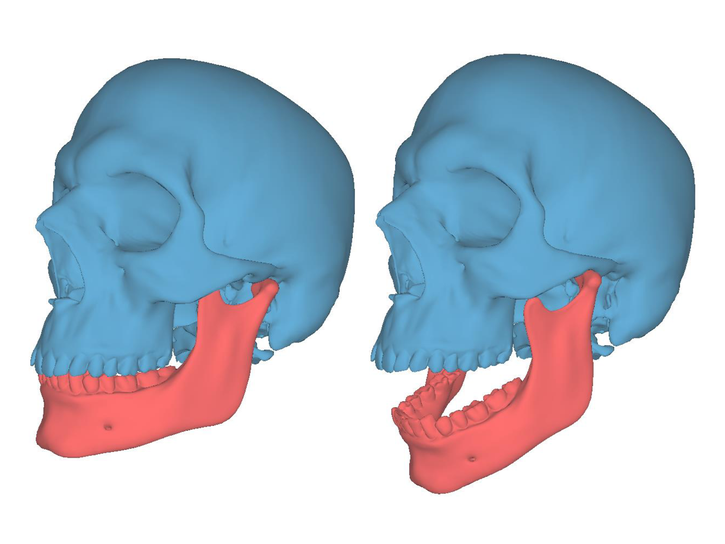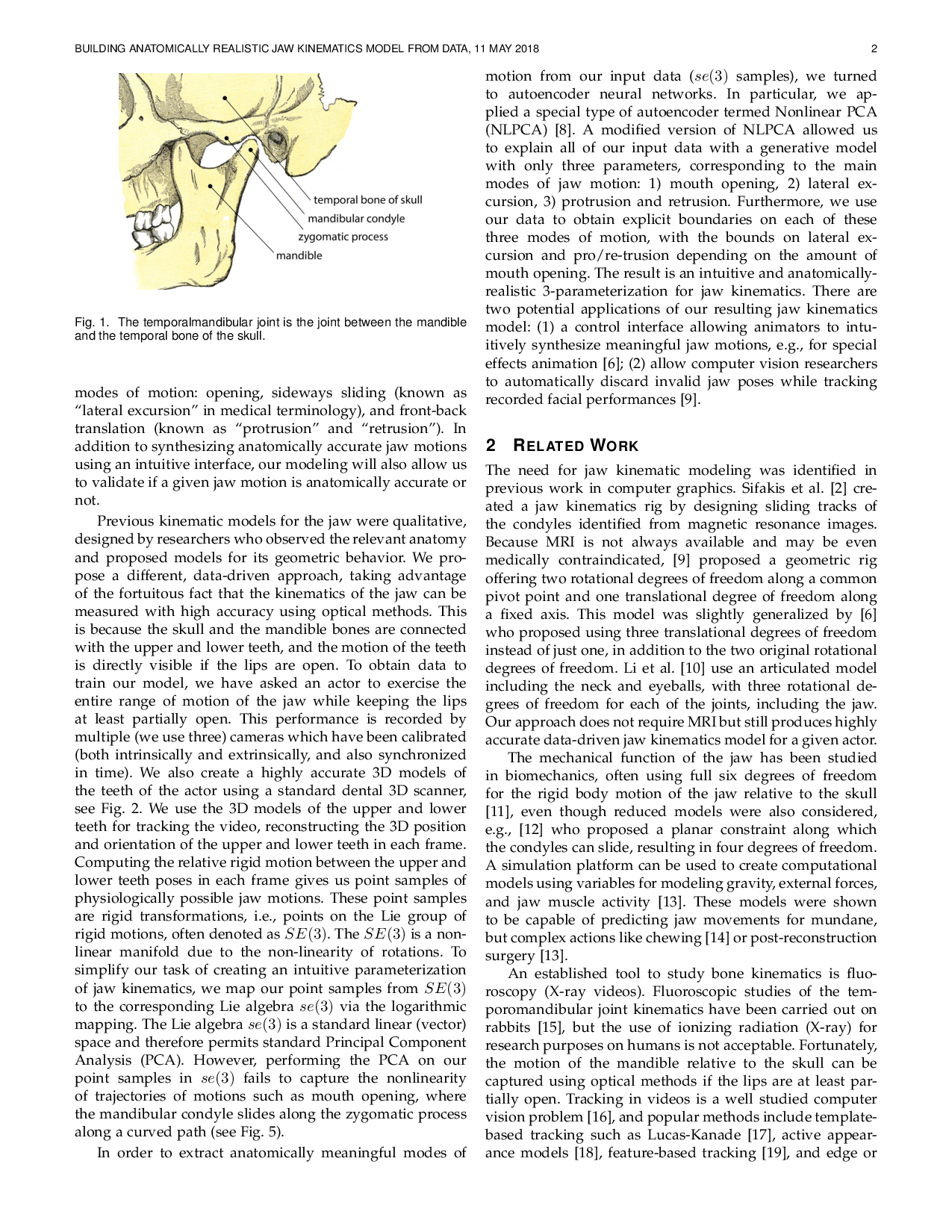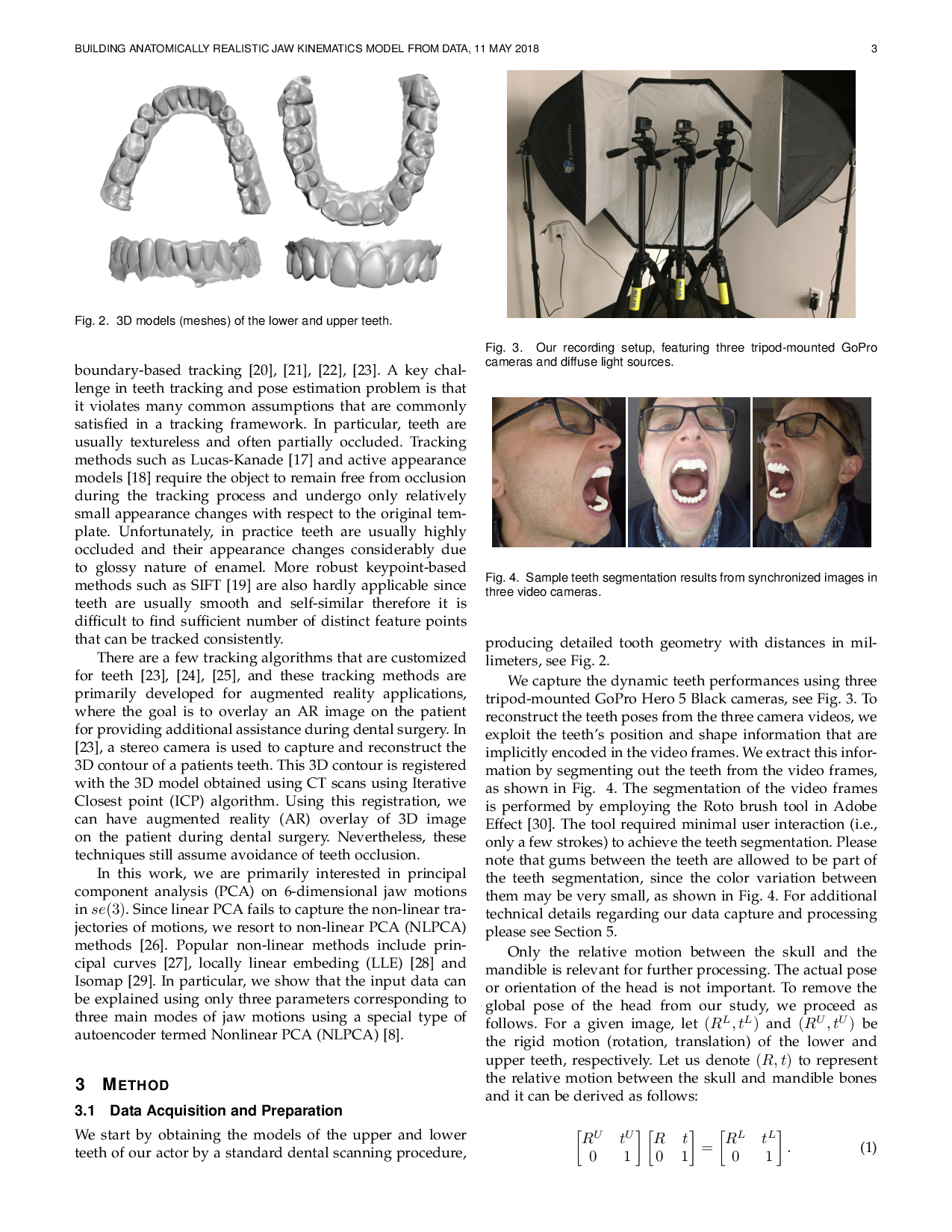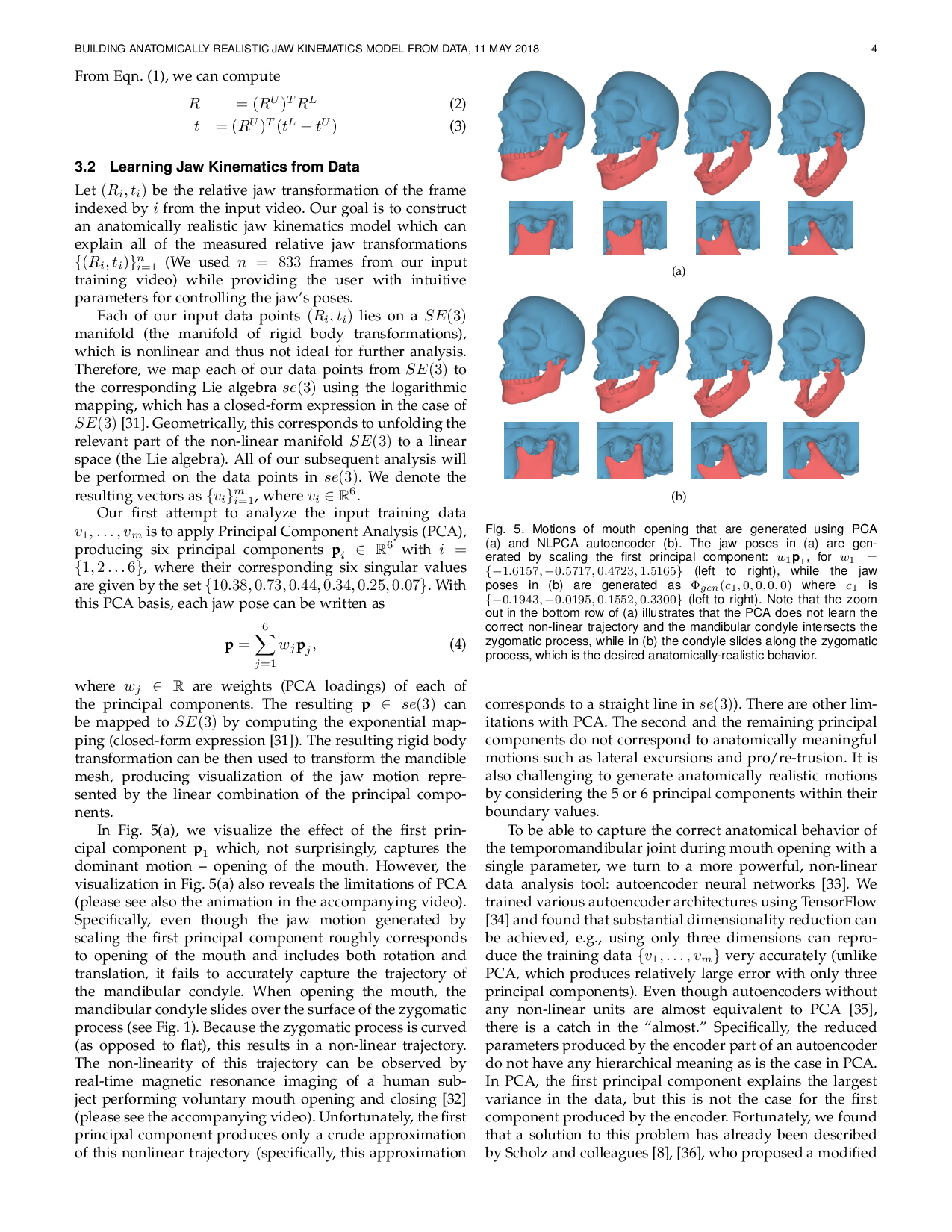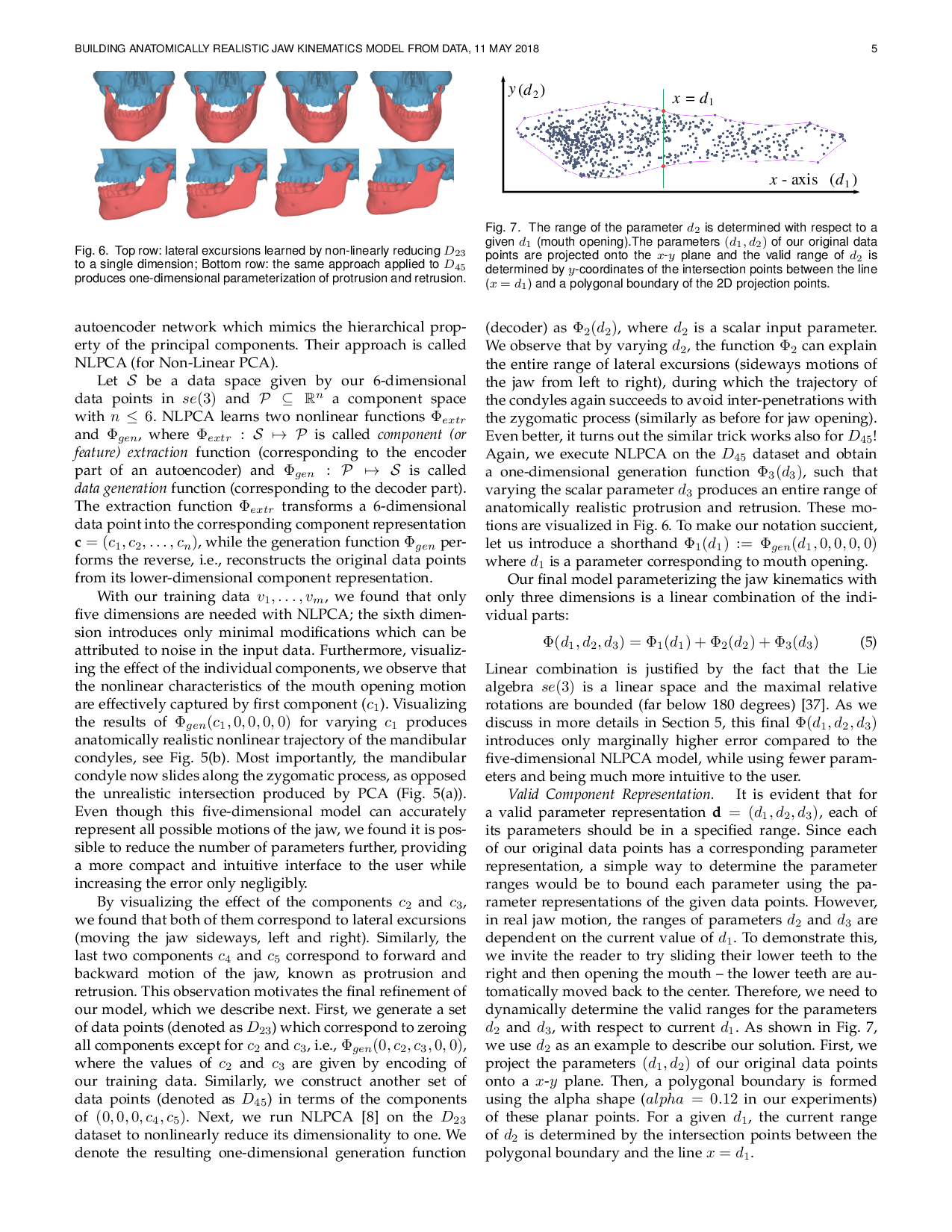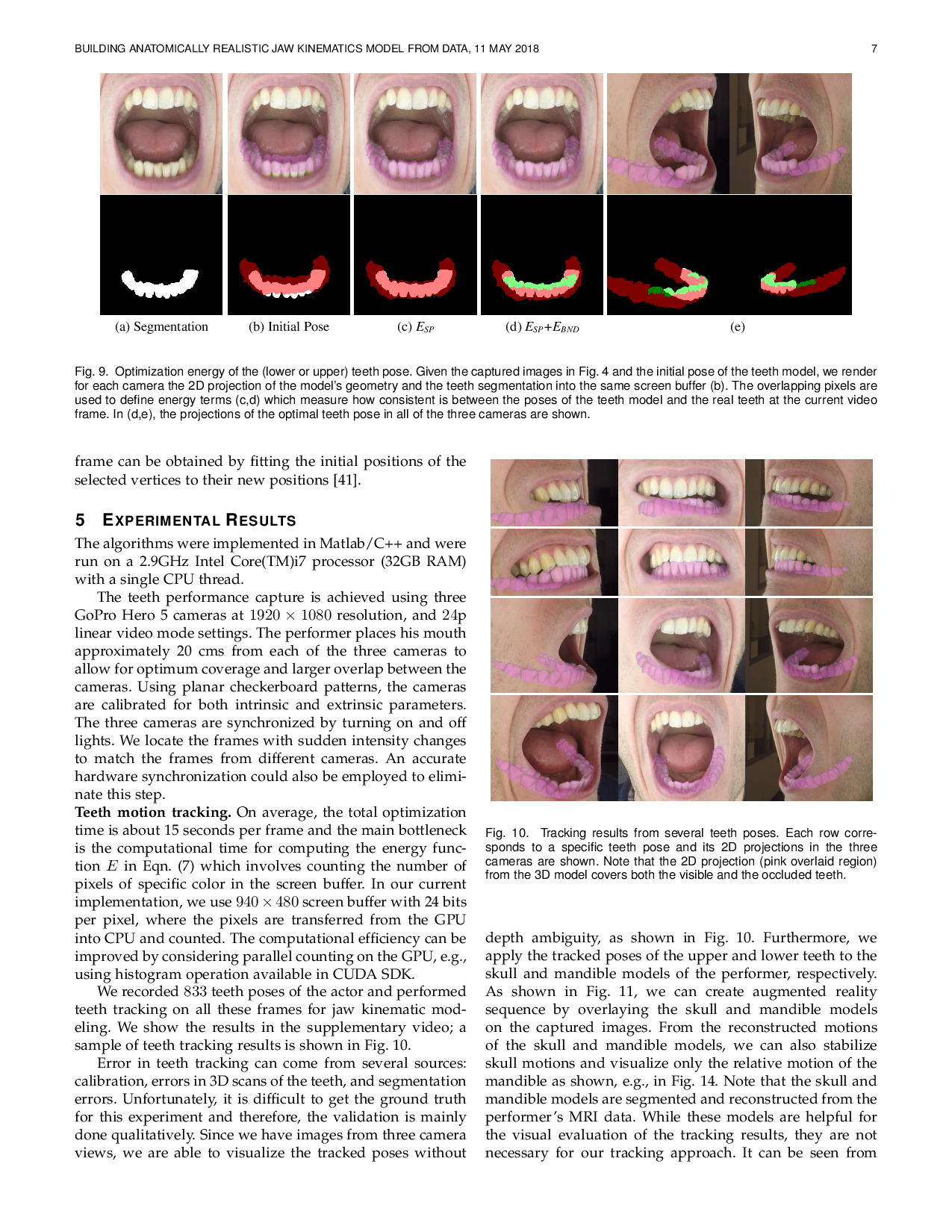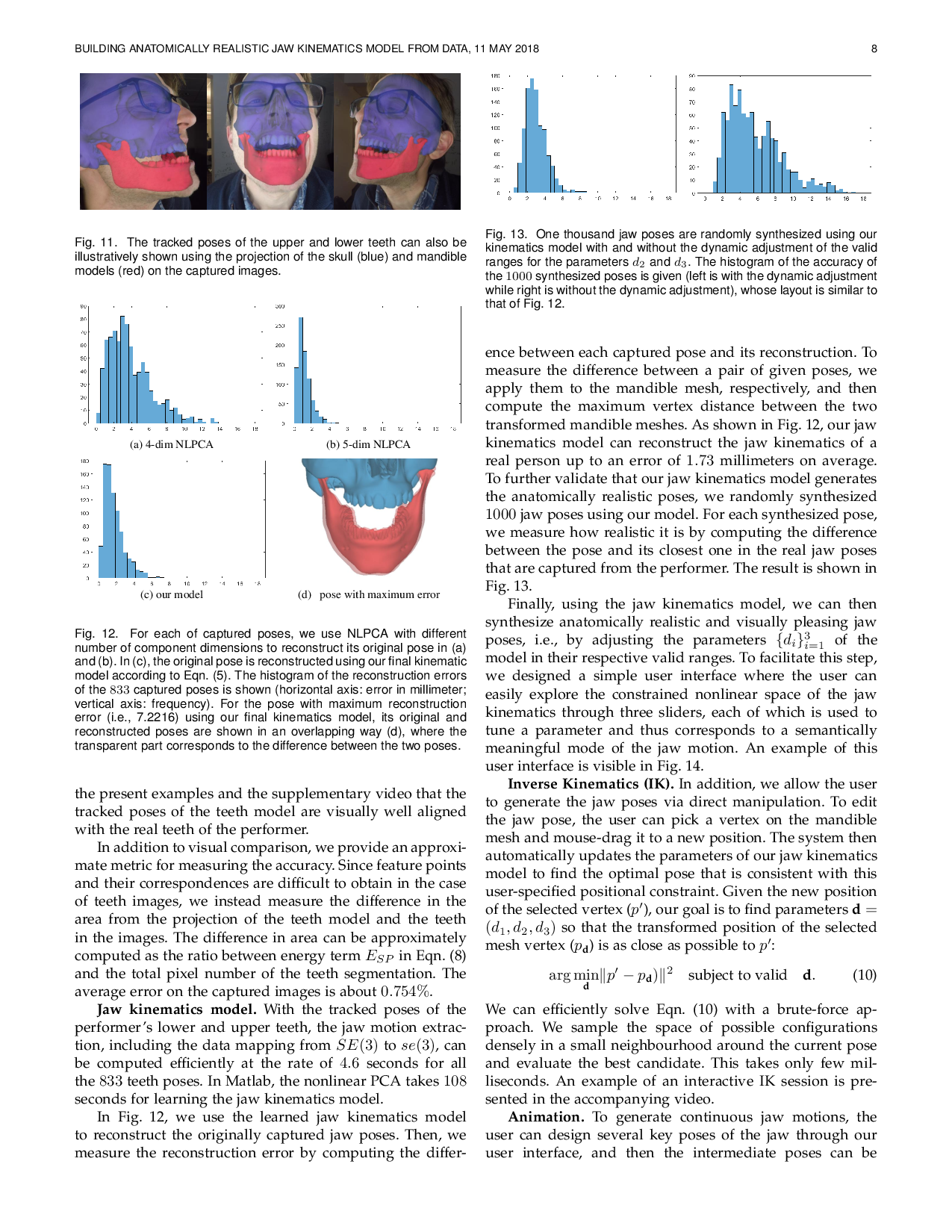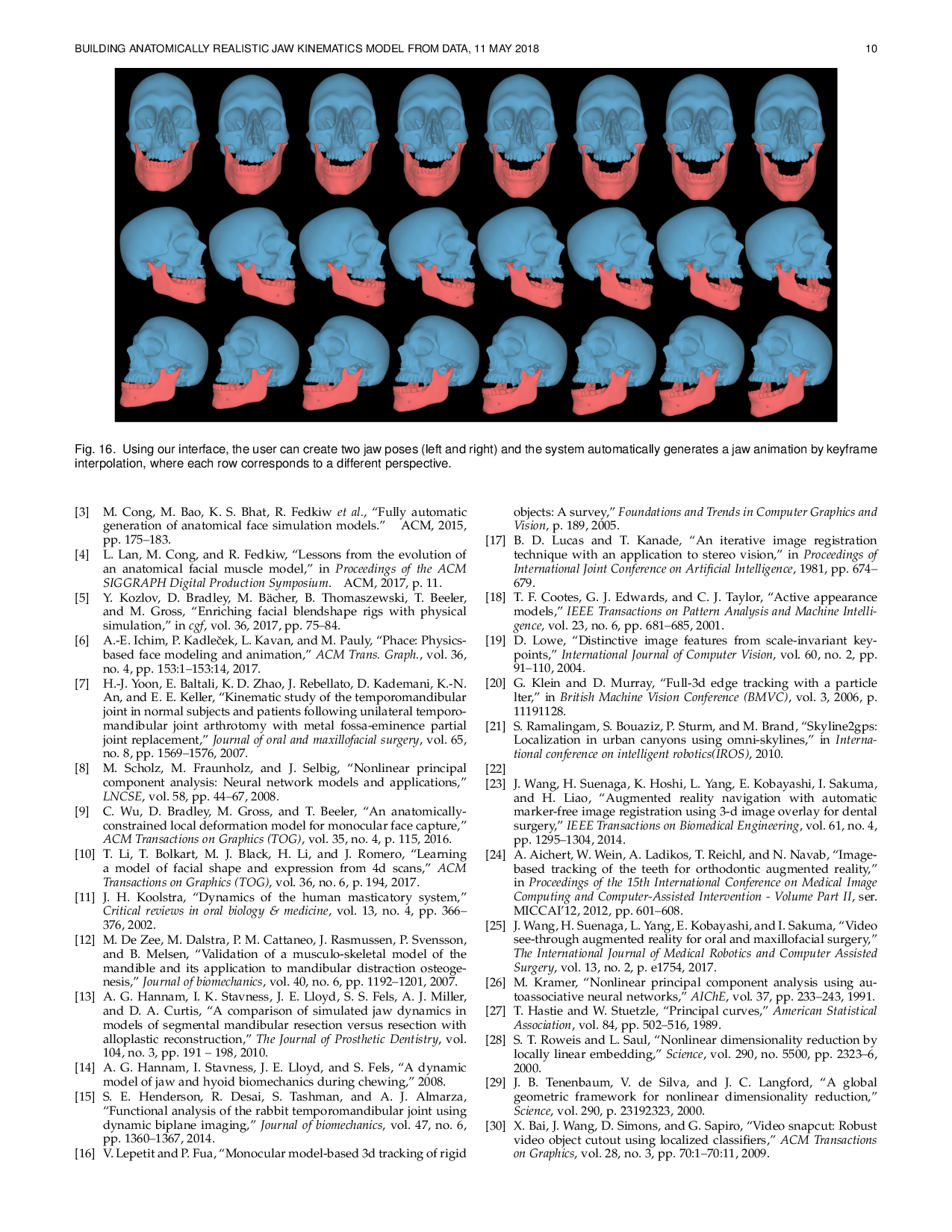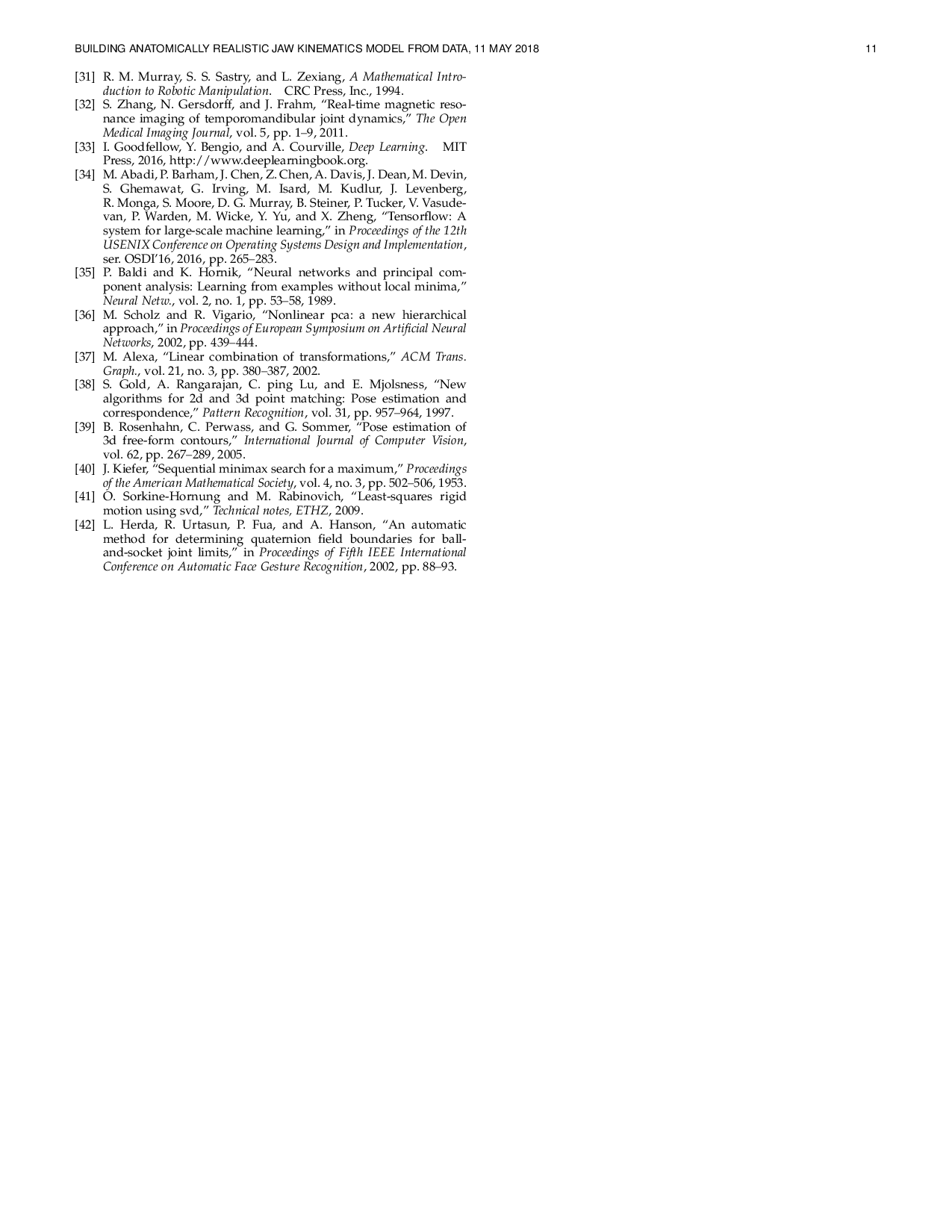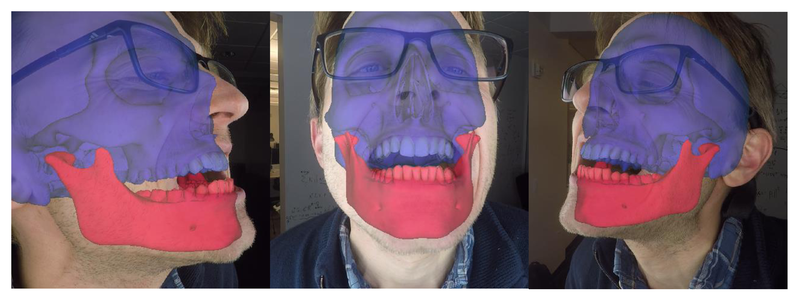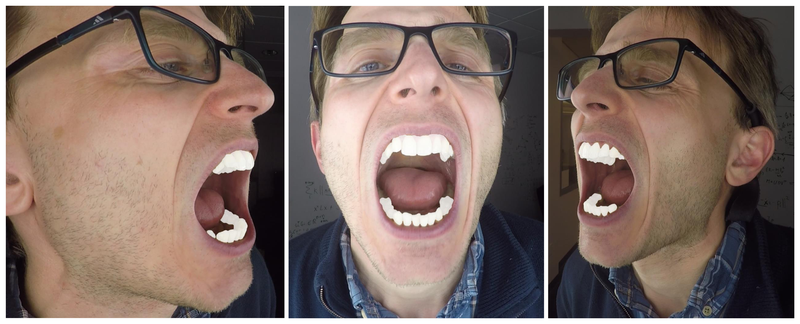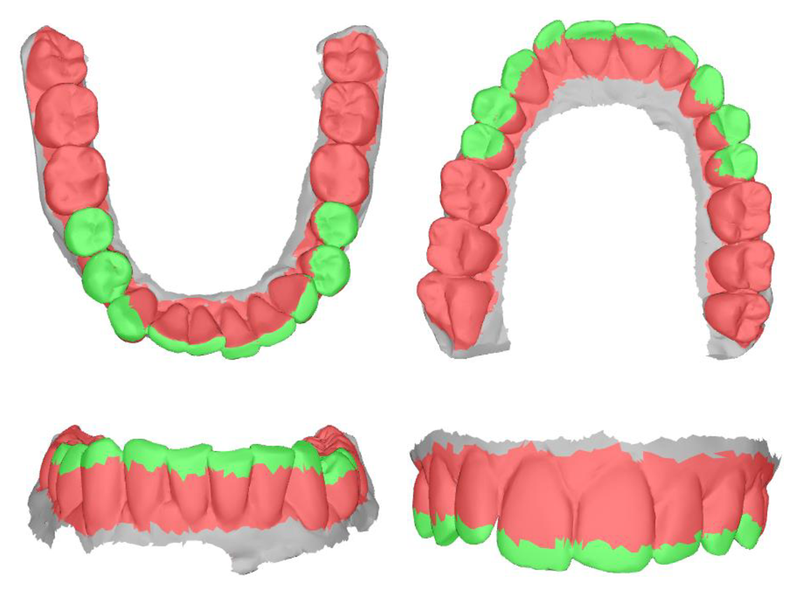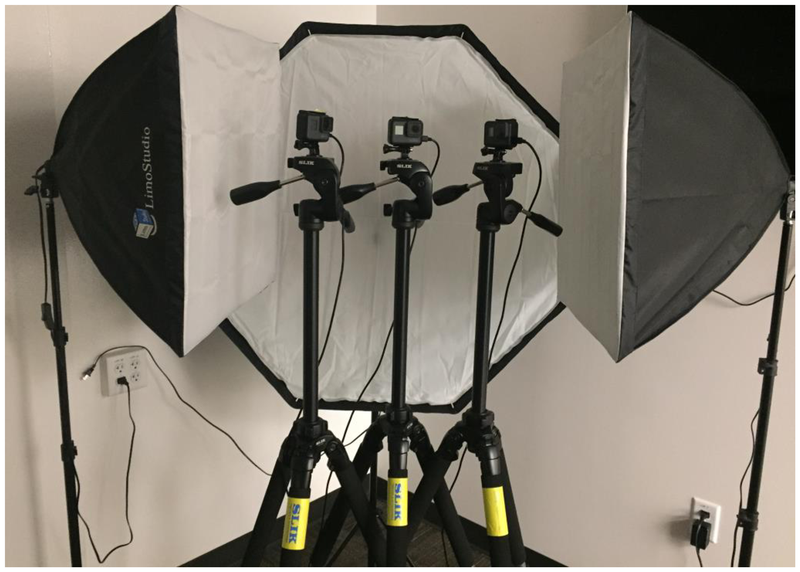Building Anatomically Realistic Jaw Kinematics Model from Data
The Visual Computer (Proceedings of CGI 2019) 35(6-8):1105-1118, 2019
Recentwork on anatomical face modeling focuses mainly on facial muscles and their activation. This paper considers a different aspect of anatomical face modeling: kinematic modeling of the jaw, i.e., the temporomandibular joint (TMJ). Previous work often relies on simple models of jaw kinematics, even though the actual physiological behavior of the TMJ is quite complex, allowing not only for mouth opening, but also for some amount of sideways (lateral) and front-to-back (protrusion) motions. Fortuitously, the TMJ is the only joint whose kinematics can be accurately measured with optical methods, because the bones of the lower and upper jaw are rigidly connected to the lower and upper teeth. We construct a person-specific jaw kinematic model by asking an actor to exercise the entire range of motion of the jaw while keeping the lips open so that the teeth are at least partially visible. This performance is recorded with three calibrated cameras. We obtain highly accurate 3D models of the teeth with a standard dental scanner and use these models to reconstruct the rigid body trajectories of the teeth from the videos (markerless tracking). The relative rigid transformations samples between the lower and upper teeth are mapped to the Lie algebra of rigid body motions in order to linearize the rotational motion. Our main contribution is to fit these samples with a three-dimensional nonlinear model parameterizing the entire range of motion of the TMJ. We show that standard principal component analysis (PCA) fails to capture the nonlinear trajectories of the moving mandible. However, we found these nonlinearities can be captured with a special modification of autoencoder neural networks known as nonlinear PCA. By mapping back to the Lie group of rigid transformations, we obtain a parametrization of the jaw kinematics which provides an intuitive interface allowing the animators to explore realistic jaw motions in a user-friendly way.
